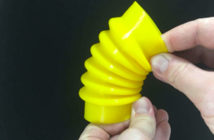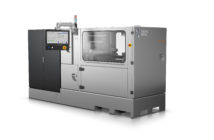Hybrid manufacturing is the term that describes the combination of additive manufacturing and subtractive manufacturing in a single machine. Additive manufacturing is used to build up a component, part or structure within another part; subtractive manufacturing (or computer numerical control (CNC) milling) is used to fabricate, spot mill, polish and so on.
Commonly, Additive manufacturing prints in the form of laser cladding to build up a metal (Read more about additive manufacturing materials) form that, when cooled, is machined using traditional methods. A reverse example would be machining to create a base structure, with 3D printing used to create thin structures on top of the base. Subtractive manufacturing is used where traditional methods suffice and additive manufacturing is used with a high degree of detail and delicacy.
The hybrid manufacturing resurgence is due to the onset of the metal and additive manufacturing growth in the 2010s. At this time the cost of lasers had dropped to around $100,000, making it possible to couple with a large CNC machine tool purchase. The metal powder bed machines were being delivered for $800,000 to $1,500,000 making hybrid manufacturing an ideal alternative, mainly for larger parts.
In the last five years, the number of machine tool builders offering hybrid manufacturing has gone from zero to double digits.
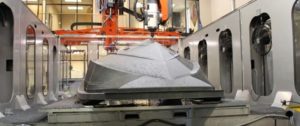 Source:Thermwood.
Source:Thermwood.
Which materials can be used in Hybrid Manufacturing?
It depend of the machine system, nearly any metal available in a wire or powder format could be 3D printed. These include cobalt chrome, copper, aluminum, stainless steel, tool steel and titanium, and many others. One advantage of hybrid metal systems is that they often enable applying dissimilar metals to the same part, for instance cladding with Inconel for strength or incorporating copper.
Polymer systems often use fused filament fabrication and so many different polymer filaments can be used. There are large-scale hybrid systems that use injection molding pellets and may be compatible with composite reinforced polymers. Hybrid polymer systems can also apply multiple materials, for instance to create an overmolding effect.
Why Hybrid Manufacturing is a good choice?
Hybrid manufacturing offers a number of benefits over machining or additive manufacturing alone. Due to additive manufacturing it is possible to build up and repair damaged parts, or to reduce machining work by starting with a smaller blank and adding material just where it is needed. The Additive Manufacturing technique also allows for the use of multiple materials in a single part, which makes it possible to clad weaker metals for greater strength, add copper to aid heat transfer or save money on material by applying expensive metals in a very specific spot.
When additive is together with CNC milling in a hybrid system, it is possible to 3D print and finish a part in a single setup: It reduces error because the printed part does not have to leave the build envelope and be reset on a separate machine. It is also possible to alternate printing and machining to finish internal features that would be inaccessible in the completed piece. Watch the video about Hybrid Manufcturing for a better understanding:
What are the five top companies of Hybrid Manufacturing?
-
DMG Mori
Leader in the machine tool industry and hybrid manufacturing, DMG Mori is the obvious choice to begin the list of hybrid manufacturing companies. The company introduced the LASERTEC 65 3D Hybrid system which leverages the Siemens NX: Complete Hybrid CAD / CAM – Module for additive and subtractive programming. The DMG Mori system uses a laser head handled by a fully automatic shuttle – without manual intervention, for 5-axis material deposition by a coaxial nozzle, resulting in homogeneous powder distribution, independent from direction of laser deposition welding. This is combined with a full 5-axis milling machine and run through process monitoring and adaptive process-control (Closed Loop). DMG Mori’s CELOS software also enables continuous measuring and monitoring of the laser buildup process as well as automatic regulation of the laser power in real-time for homogeneous part qualities.
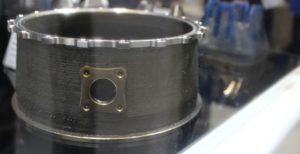 Source: DMG Mori.
Source: DMG Mori.
-
Mazak
Mazak‘s INTEGREX i-400 AM is one of the largest hybrid manufacturing systems available on the market. As a fusion of additive technology and advanced multi-tasking capabilities, the INTEGREX i-400 is the machine that represents the companies bet on innovative alternative solutions to conventional processing in terms of part design and machining. The machine was developed specifically for small lot production of very difficult-to-cut materials and uses its additive capability to easily generate near-net-shape component features and then completes them via high-precision finish machining operations. If necessary, the machine will also laser mark parts. The machine melts the metal powder using fiber laser heat.
 Source: Mazak.
Source: Mazak.
-
Hermle
MPA technology is generally designed to grow material on geometrically accessible planes of a component. If additional materials are to be integrated or embedded, the materials are applied in layers as far as the relevant contours of the other material components are accessible for machining. A special filling material allows for the creation of inner hollow areas, channels and undercut contours. This material is water soluble and flushed out at the end of the manufacturing process to expose the inner geometry. Subsequent heat treatment optimizes the component’s microstructure and ensures the component has the desired hardness.Hermle is another well-known leader of the subtractive machine tools industry. The thermal injection technique that Hermle has been establishing over more than 10 years opens up new dimensions in the field of additive and hybrid manufacturing. It unites the ideas of additive production and better milling. The MPA material application unit is integrated into a Hermle 5-axis machining center of type C-40. The combination of MPA material application and milling in just one machine results in a hybrid additive manufacturing process which allows for part dimensions exceeding 500 mm in diameter.
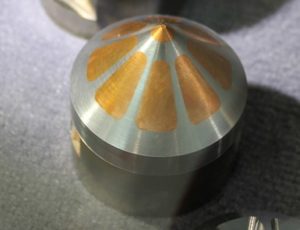 Source: Hermle.
Source: Hermle.
-
Siemens
The Siemens NX: Complete Hybrid CAD / CAM – Module for additive and subtractive programming is a single software package for the complete process chain (design, additive process, subtractive machining, finishing). It is used in several additive, subtractive and hybrid machines to prepare the complete manufacturing process using a digital twin of the workpiece, fixtures, and entire machine. The system calculates laser paths for additive manufacturing and cutting toolpaths for subtractive machining.Although it is not a hardware producer, Siemens figures in our hybrid manufacturing companies list for all the work that the company has been doing – at a software level – to advance the hybrid manufacturing process. Because most hybrid manufacturing systems leverage DED technologies, software becomes of fundamental importance to enable and optimize part geometry, thus accelerating the additive and subtractive combination.
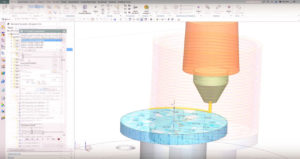 Source: Siemens.
Source: Siemens.
-
Matsuura
During the last ten years Matsuura has been developing the the world’s first 3D Printing – LUMEX Avance-25, a Metal Laser Sintering Milling Hybrid CNC machine tool – a truly innovative platform in Net Shape Form and Additive Manufacturing – with the integration of a proven Matsuura high-speed milling spindle for subtractive machining processes. The ability to “grow” a metal component in layers with complex internal features, and to mill those internal features as the layers are added to give a perfect surface finish, makes the LUMEX Avance -25 a distinctive and remarkable production machine tool – offering designers and manufacturers a route to designing what they can imagine, and not be limited by the restrictions of their current production methods, strategies and machines.Japanese company Matsuura was the very first company to implement a subtractive process combined with an additive powder bed fusion (SLM) process. Matsuura is the market leader in the field of automated multi-pallet, multi-axis and multi-tasking CNC machine tools and their associated manufacturing process solutions.
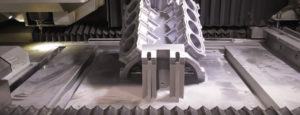 Source: Matsuura.
Source: Matsuura.
Find More Additive Manufacturing Industry News
on
additivenews.com
- Sources & More information
-
Related article categories:
GeneralArticle and featured image:
Source:
Margaret Rouse, TechTarget searchERP Definition of hybrid manufacturing https://searcherp.techtarget.com/definition/hybrid-manufacturing published in May 2017;
David Sher, 3D Printing Media Network 10 Top Hybrid Manufacturing companies https://www.3dprintingmedia.network/the-top-ten-hybrid-manufacturing-companies/, published on Mar1 2019;
Stephanie Hendrixson, Additive Manufacturing Media AM 101: Hybrid Manufacturing https://www.additivemanufacturing.media/blog/post/am-101-hybrid-manufacturing published on Aug29 2019;
The article was re-edited and published by Rob Parker on Dec2 2019;
Featured Image & Article Photo:
/



